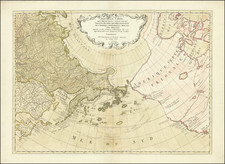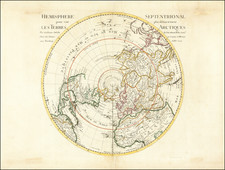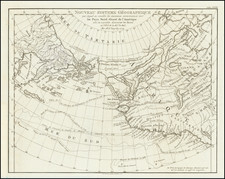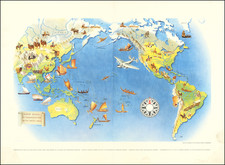Detailed 9 sheet map of the Pacific Ocean and contiguous regions, showing the seismic activities measured between 1896 and 1968.
The map shows the entire Pacific basin, including North and South America and the islands of Southeast Asia, to illustrate the seismic activity and plate tectonics of this volatile and strategically important region.
The map was made in 1973 with at least one other edition in 1976. Its editors-in-chief, L. I. Krasny and V. V. Fedynsky, were Soviet scientists interested in geology, seismology, and plate tectonics. B. A. Andreev, listed as an editor, studied geology and geophysics. The other editor, S. L. Solovjev (sometimes spelled Soloviev), had a Tsunami Research Laboratory named for him.
Russians have always been leaders in the study of the plate tectonics, seismology, geology, and geophysics of the Pacific basin. Partially as a result of their work, it is the ocean best understood in terms of its history and origin. As is true of the world's other oceans, the Pacific is only 200 million years old-young in geological terms. Due to its particular plate tectonics, the Pacific, or the Ring of Fire, is home to 90% of the world's earthquakes and 75% of the world's active volcanoes. Add to this the fact that the ocean is central to global shipping and home to hundreds of millions, and it is easy to understand why scientists were and still are eager to understand how the Pacific basin moved and grew.
Thematic maps, like this one, highlight one specific theme projected on a base map. Although popular today, they only began to be commonly used in the mid-nineteenth century, although earlier examples like Edmund Halley's map of magnetic variation did exist. Seismology as a discipline follows a similar historical trajectory, gaining credibility in the mid-nineteenth century.
During the Cold War, interest in seismology peaked as rivals could detect nuclear explosions with seismographs. In 1961 the Worldwide Standardized Seismograph Network (WWSSN) was established, ushering in the golden age of seismology research. In tandem, the 1960s witnessed a revolution in the study of plate tectonics, allowing scientists to understand that earthquakes happen where plates separate, come together (subduction zones), or slide past each other (transform boundaries). This map is thus a paradoxical object, the result of international scientific collaboration and the intense international competition that characterized the Cold War.









![[English Edition!] Maris Pacifici quod vulgo Mar del Zud](https://storage.googleapis.com/raremaps/img/small/71000.jpg)


![Representation du Cours ordinaire des Vents de Traverse qui regnent les Cotes dans la grande Mer Du Sud [California as an Island]](https://storage.googleapis.com/raremaps/img/small/54744.jpg)

